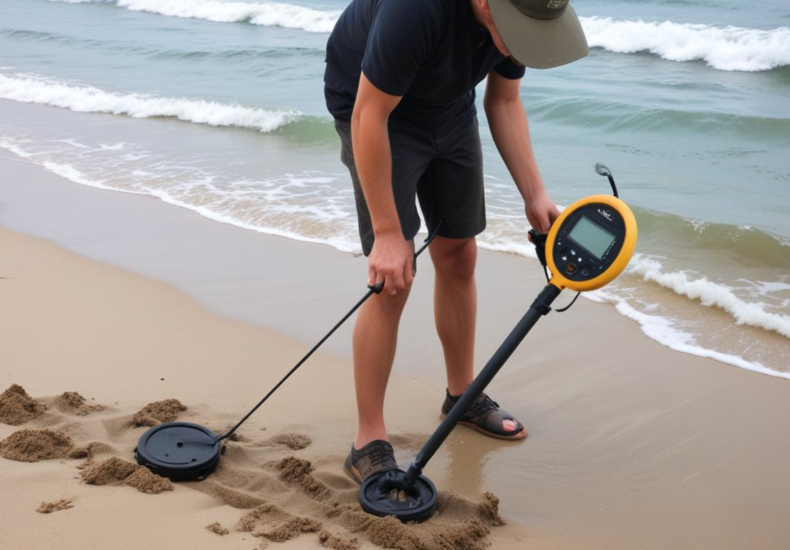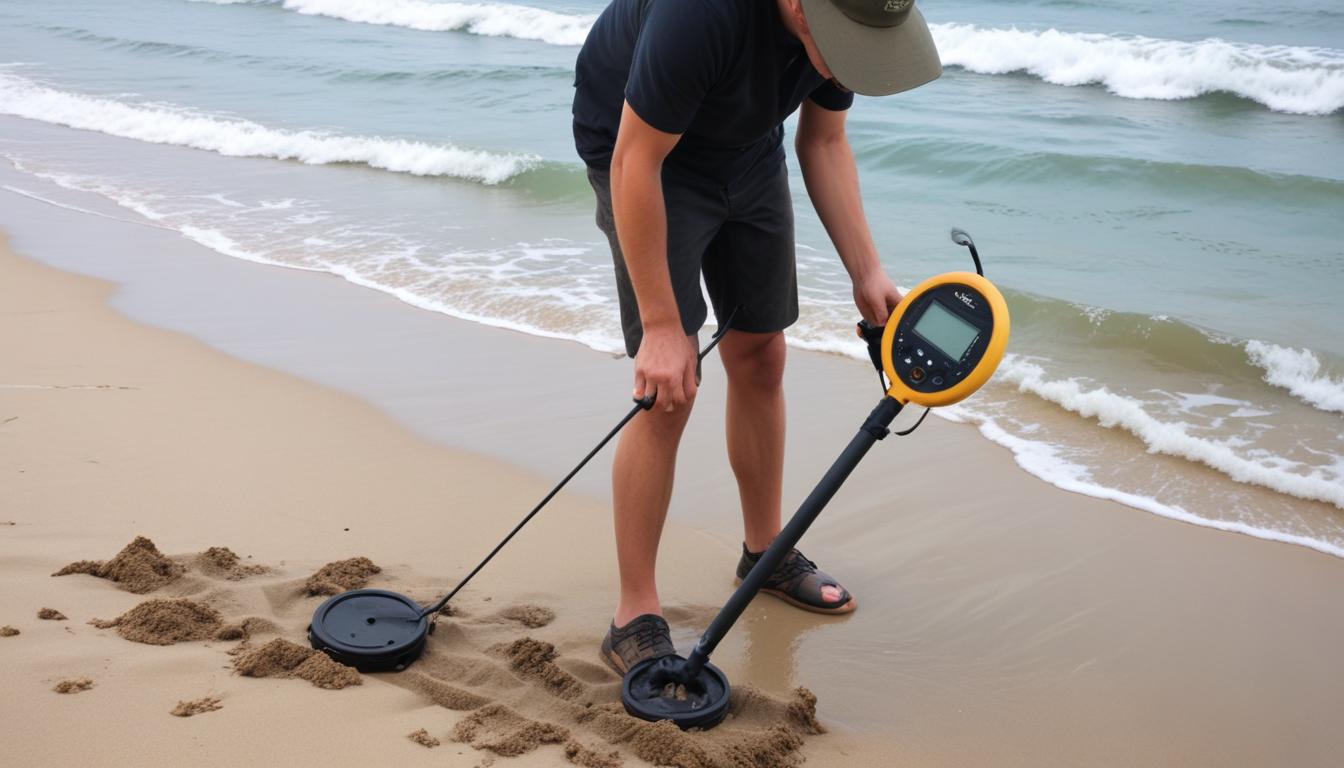
How deep can a metal detector really detect?
The depth at which a metal detector can detect objects is influenced by a variety of factors, encapsulating the intricacies and limitations involved in metal detection technology. First and foremost, the sensitivity of the metal detector plays a critical role. Higher sensitivity settings allow the device to detect smaller objects or objects that are buried deeper in the ground. However, increasing sensitivity can also lead to more false positives, as the device may pick up minor disturbances caused by soil composition or other environmental factors.
Another significant factor is the type and size of the search coil used in the metal detector. Generally, larger coils can cover more ground and reach greater depths, but they might be less sensitive to smaller objects. Conversely, smaller coils provide finer detection capabilities at shallower depths, which can be more beneficial when searching for small artifacts or pieces of metal.
The material of the object itself also impacts detection range. Metals such as iron, gold, and silver create stronger magnetic responses, making them easier to detect at greater depths compared to materials with lower conductivity. The shape and orientation of the object can affect its detectability as well; for example, a long piece of metal lying horizontally is typically easier to locate than a similar piece positioned vertically.
Lastly, the frequency at which the metal detector operates can influence the detection depth. Lower frequencies tend to penetrate deeper into the ground and are better suited for detecting larger items made from more conductive metals. Higher frequencies, while providing greater sensitivity to small objects near the surface, often cannot reach as deep.
Understanding these factors is crucial for anyone aiming to maximize the effectiveness of their metal detection activities, whether for professional archaeological digs or recreational treasure hunting.
Types of metal detectors and their capabilities
Metal detectors come in various designs, each tailored to meet specific requirements and capitalize on different technologies. The most common types include Very Low Frequency (VLF), Pulse Induction (PI), and Multi-Frequency (MF) detectors, each offering unique capabilities and specialized advantages that affect their detection depths.
VLF detectors are among the most popular for general-purpose metal detecting due to their balance between cost, versatility, and sensitivity. They operate using a continuous electromagnetic frequency, which makes them highly effective at distinguishing between different types of metals. This discernment makes them advantageous for hobbyists who seek relics, coins, or jewelry. Even within the VLF category, the coils’ configuration—such as concentric or double-D—may vary, affecting their depth penetration and sensitivity to target size and shape.
Pulse Induction detectors, on the other hand, are known for their ability to perform in highly mineralized environments where other detectors might suffer from excessive ground noise. PI detectors send powerful, short bursts (pulses) of current through their coils, which is different from the constant electromagnetic field utilized by VLF detectors. The PI systems can handle challenging terrains and achieve greater depths, searching deeply buried objects that VLF detectors may not reach. However, their high power comes at the cost of lower discrimination capabilities, which can be a drawback for detecting in trash-laden areas.
Multi-Frequency detectors use more than one frequency simultaneously, offering a hybrid solution that takes advantage of both low and high frequency detection capabilities. This can provide a more detailed analysis of the ground and buried objects, increasing the accuracy with which targets are identified. Also, they perform well in a wide range of soil conditions, which makes them versatile in achieving detection depths that are otherwise challenging to attain with single-frequency machines.
Each type of metal detector’s inherent features directly impact their effective detection range. For instance, the deeper penetration possible with PI detectors is suitable for locating large items in spacious areas like beaches or battlefields. Meanwhile, the enhanced sensitivity of VLF detectors at shallower depths makes them ideal for finding small artifacts in areas like historical sites. Ultimately, the type of metal detector chosen should align with the specific needs of the exploration, whether it’s maximizing depth or enhancing sensitivity to smaller, finer targets.
Influence of ground conditions
The influence of ground conditions on the effectiveness of metal detectors is profound and cannot be overstated. Different soil types can drastically affect the detection range and the depth at which buried metals can be identified. Highly mineralized soils, such as those rich in iron oxides or magnetite, can create background noise which interferes with the signals from metal objects, thereby reducing the detector’s sensitivity and depth. In contrast, less mineralized soils, like sandy or loamy soils, typically allow for deeper penetration of the electromagnetic signals emitted by metal detectors.
Moisture content in the soil also plays a crucial role in metal detection. Wet soils can conduct electricity better than dry soils, enhancing the detector’s ability to transmit signals deeper into the ground. This phenomenon can increase the metal detector depth significantly under the right conditions. However, too much moisture can also lead to heavy mineralization signals in the soil, which muddy the specific signals from metal objects, possibly leading to false positives or masking valuable targets.
The temperature of the soil can affect ground conductivity as well. Warmer soils tend to be more conductive than colder ones, which can help in extending the detection range of a metal detector during warmer conditions. Seasonal changes, therefore, can subtly influence detection strategies and results, with spring and summer potentially yielding different outcomes compared to fall and winter.
Additionally, the physical properties of the soil, including its compactness and the presence of rocky materials, can impact the efficiency of metal detection. Hard-packed soils or those with a lot of rocks can scatter or absorb the electromagnetic signals, reducing the depth of detection and sometimes even blocking the signal from reaching deeper buried metals.
Understanding these ground conditions and how they interact with metal detectors can guide users in adjusting their equipment settings, such as sensitivity and ground balance, to compensate for challenging conditions. This knowledge also supports better planning of metal detecting activities to align with optimal ground conditions, enhancing overall detection success.
Common metals and detection ranges

Different metals respond variably when detected by metal detectors, largely due to their electrical conductivity and magnetic permeability. Iron, for instance, is highly magnetic and conductivity, allowing it to be detected from greater depths. This makes iron artifacts, such as old tools or horseshoes, relatively easier to find even when buried deep. Gold, while less magnetic, has a strong conductivity that tends to position it within the moderate to high detection range of many detectors, especially those specifically calibrated for gold prospecting.
Silver, similar to gold, is another highly conductive metal that metal detectors can identify from considerable depths, often deeper than non-precious metals like aluminum or lead. The capability to detect these metals from a great depth can turn a routine exploration into an exciting treasure hunt. Coins, jewelry, and other relics containing silver can often be unearthed from depths that other metals may not reach. This property has made silver a favorite among both amateur and professional treasure hunters.
The detection limits for less conductive metals like aluminum or lead can be more variable. Aluminum, for example, may provide a strong initial signal but can be tricky to pinpoint accurately in deeper soil layers due to its lower conductivity compared to metals like silver or gold. Similarly, lead, despite its density, typically does not match the detection range of more conductive metals and requires closer proximity to the metal detector coil for effective detection.
It is also essential to consider the size and shape of the metal when discussing detection ranges. Larger objects made of any type of metal are generally easier to detect at greater depths than smaller ones. Similarly, flat, wide objects tend to produce a stronger and more easily detectable signal than narrow or vertically oriented objects, which might only be detected when the search coil passes directly over them.
For hobbyists and professionals alike, understanding these nuances about common metals and their typical detection ranges can significantly enhance the effectiveness of their searches. Adjusting the sensitivity of the metal detector based on the expected target type can further help in maximizing the chances of successful detection, whether one is searching for relics deep in the woods or coins on a busy beach.
Enhancing detection depth with technology and techniques
Enhancing the depth at which a metal detector can identify underground objects is a pursuit that resonates with both amateur treasure hunters and archaeological professionals alike. This improvement can be achieved through various technologies and techniques dedicated to maximizing the detection range and sensitivity of these devices.
One of the primary methods for enhancing metal detector depth involves the use of specialized software and signal processing algorithms. These technologies can interpret the signals returned from the ground more precisely, distinguishing between noise and actual metal objects. Advanced digital signal processing (DSP) can minimize the interference caused by mineralized soils and other environmental factors, thereby increasing the depth at which objects can be detected effectively.
Another technique is the adjustment of pulse delay in Pulse Induction (PI) metal detectors. By tweaking this delay, users can optimize the device’s sensitivity to different metal types and depths. Shorter pulse delays increase sensitivity to smaller or finer objects close to the surface, while longer pulse delays are more suited for detecting larger objects at greater depths.
Coil technology also plays a significant role in enhancing detection capabilities. Larger search coils generally enable deeper detection ranges, but they may reduce the detector’s sensitivity to smaller objects. Conversely, smaller coils, while beneficial for detecting small items near the surface, may lack the power necessary to penetrate deeper into the ground. Therefore, selecting the appropriate coil based on the specific searching goals is crucial for optimizing metal detector depth.
Additionally, the use of ground balancing features helps to mitigate the effects of highly mineralized soils. By adjusting the metal detector to ignore the naturally occurring mineral content in the soil, the sensitivity to metal objects increases, which can enhance the overall detection depth.
Lastly, the improvement of operational techniques can also lead to better depth detection. For instance, maintaining a stable and consistent sweep speed and pattern allows for more accurate sensing by the metal detector. Skilled users often develop a keen sense for how speed, angle, and sweep width can be adjusted in real-time based on the responses received from their detectors, leading to more effective explorations.
By integrating these advanced technologies and techniques into their practices, users can significantly improve the capabilities of their metal detectors, pushing the limits of detection range and boosting the chances of uncovering hidden treasures buried deep beneath the surface.
You may also like
Archives
Calendar
| M | T | W | T | F | S | S |
|---|---|---|---|---|---|---|
| 1 | 2 | |||||
| 3 | 4 | 5 | 6 | 7 | 8 | 9 |
| 10 | 11 | 12 | 13 | 14 | 15 | 16 |
| 17 | 18 | 19 | 20 | 21 | 22 | 23 |
| 24 | 25 | 26 | 27 | 28 | 29 | 30 |
Leave a Reply